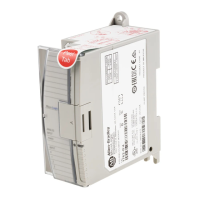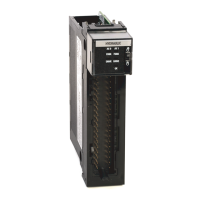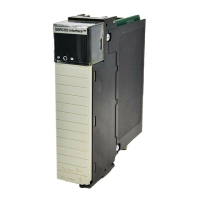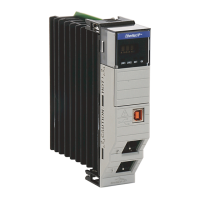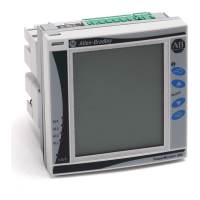34 Rockwell Automation Publication 2080-UM004D-EN-E - March 2018
Chapter 4 High Speed Counter – 2080-MOT-HSC
Enabling and Disabling a Counter using the HSC_EN bit
Disabling the counter does not inhibit any HSC_ACC_Bn loading functions
(preset or direct write) or any Z function.
The module continuously calculates rates for each of the counters regardless of
input operational mode.
Timer
For the first two counters, a timer is used to measure the time between two
successive pulses. This value is reported to the backplane as
HSC_PULSE_WIDTH_Bn.
Understanding Rates
There are different applications which require rate information but there is no
one perfect method for all. Generally, the user must weigh rate accuracy with the
need for new information quickly.
Broadly, there are two different ways to calculate rates and optimize accuracy and
speed of the rate of calculation:
• Per Pulse
1/HSC_PULSE_WIDTH_B (supported through 2080-MOT-HSC
plug-in)
HSC_PULSE_WIDTH_Bn is reported to the user in the input array
• Cyclic
Number of Pulses/User Defined Time Interval (supported through
Connected Components Workbench)
PresentRate_n is reported to the user in the input array.
Per Pulse
The Per Pulse rate method can be very accurate if the time between pulses is large
compared to the timer clock (1 µs for 2080-MOT-HSC). A timer is used to
measure the time between the two successive pulses. This value is reported to the
backplane as HSC_PULSE_WIDTH_Bn after each pulse. The user may invert
this value to derive a rate.
Per Pulse rate = 1 / HSC_PULSE_WIDTH_B
However, when the time between pulses shrinks, two factors can distort the Per
Pulse calculation of rate values:
• The time between pulses is closer to measuring the clock’s frequency,
making the granularity of the time increments have a greater effect on rate
inaccuracy.

